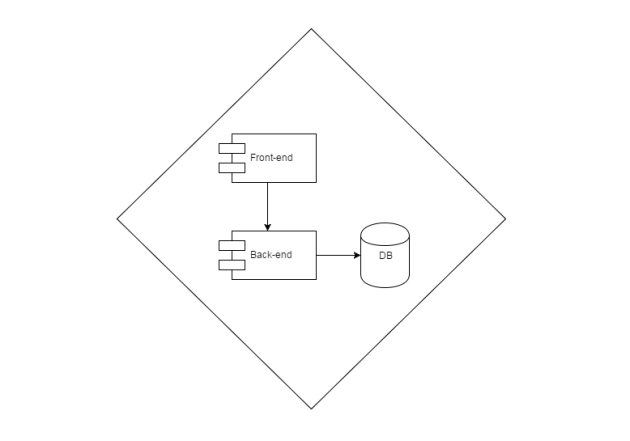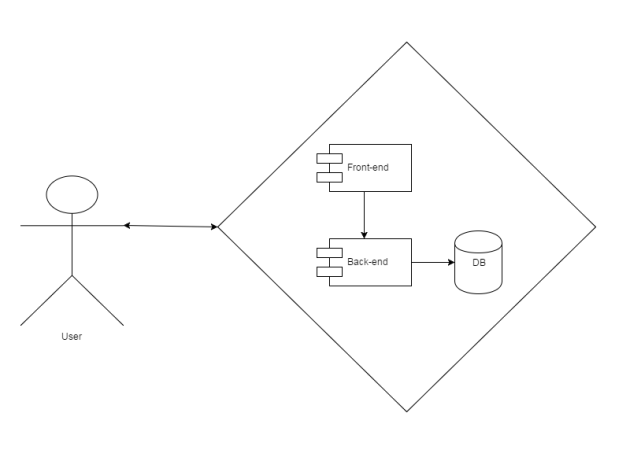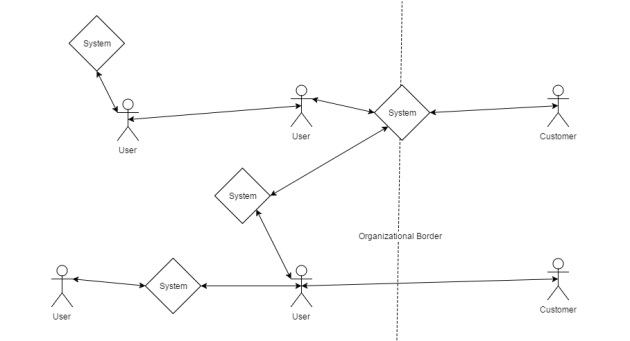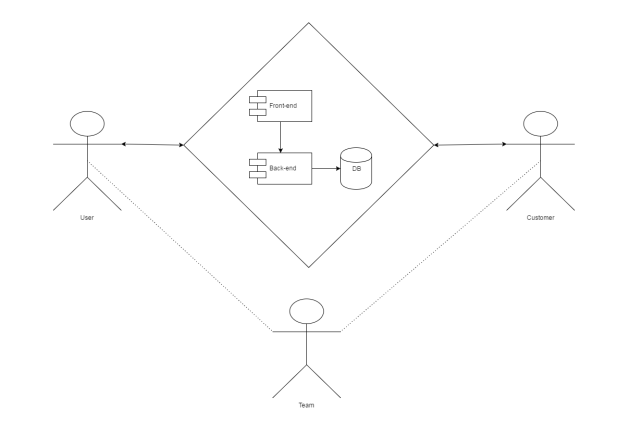I’ve mentioned before that the idea of looking at organizations as systems is one that I’ve been focusing on for quite a while now. From a top-down perspective, this makes sense – an organization is a system that works better when it’s component parts (both machine and human) intentionally work together.
It also works from the bottom up. For example, from a purely technical perspective, we have a system:

However, without considering those who use the system, we have limited picture of the context the system operates within. The better we understand that context, the better we can shape the system to fit the context, otherwise we risk the square peg in a round hole situation:

Of course, the users who own the system are also only a part of the context. We have to consider the customers as well:

Likewise, we need to consider that the customers of some systems can be internal to the organization while others are external. Some of the “customers” may not even be human. For that matter, sometimes the customer’s interface might be a human (user) rather than software. Things get complicated when we begin adding in the social systems:

The situation is even more complicated than what’s seen above. We need to account for the team developing and operating the automated system:

And if that team is not a unified whole, then the picture gets a whole lot more interesting:

Zoomed out to the enterprise level, that’s a lot of social systems. When multiplied by the number of automated systems involved, the number easily becomes staggering. What’s even more sobering is reflecting on whether those interactions have been intentionally structured or have grown organically over time. The interrelationship of social and software systems is under-appreciated. A series of tweets from Gregory Brown last week makes the same case:
https://twitter.com/jetpack/status/829366709370908673 https://twitter.com/jetpack/status/829366901356781569 https://twitter.com/jetpack/status/829367017761292288 https://twitter.com/jetpack/status/829367397899440128 https://twitter.com/jetpack/status/829367860128538624 https://twitter.com/jetpack/status/829368126454296576 https://twitter.com/jetpack/status/829368276467728385 https://twitter.com/jetpack/status/829369755136094210 https://twitter.com/jetpack/status/829369991111782401 https://twitter.com/jetpack/status/829370136666767360A number of questions come to mind:
- Is anyone aware of all the systems (social and software) in play?
- Is anyone aware of all the interactions between these systems?
- Are the relationships and interactions a result of intentional design or have they “just happened”?
- Are you comfortable with the answers to the first three questions above?
Pingback: SPaMCAST 442 – Capability Teams, Software and Social Systems, Software Quality | Software Process and Measurement
Pingback: Form Follows Function on SPaMCast 442 | Form Follows Function